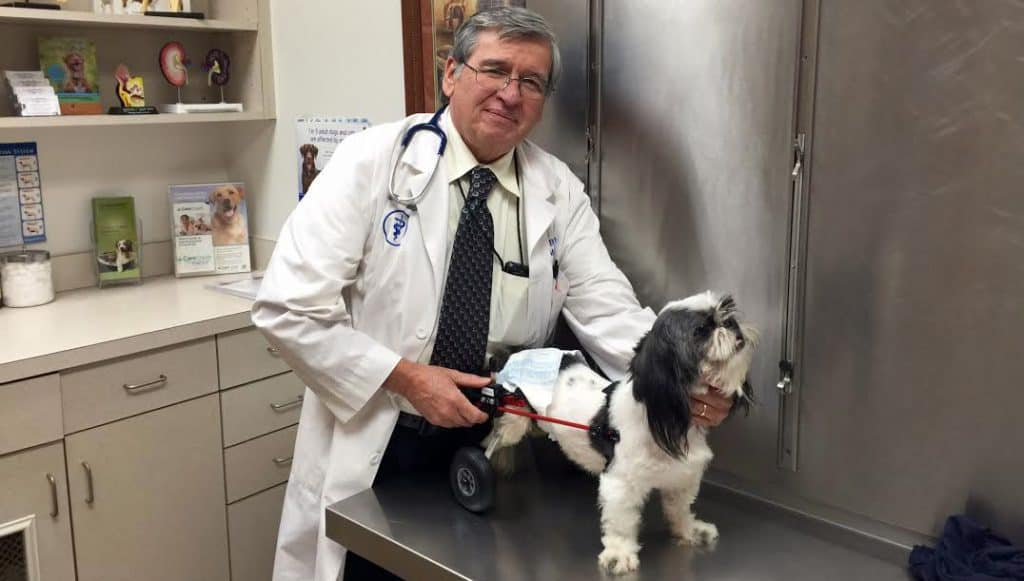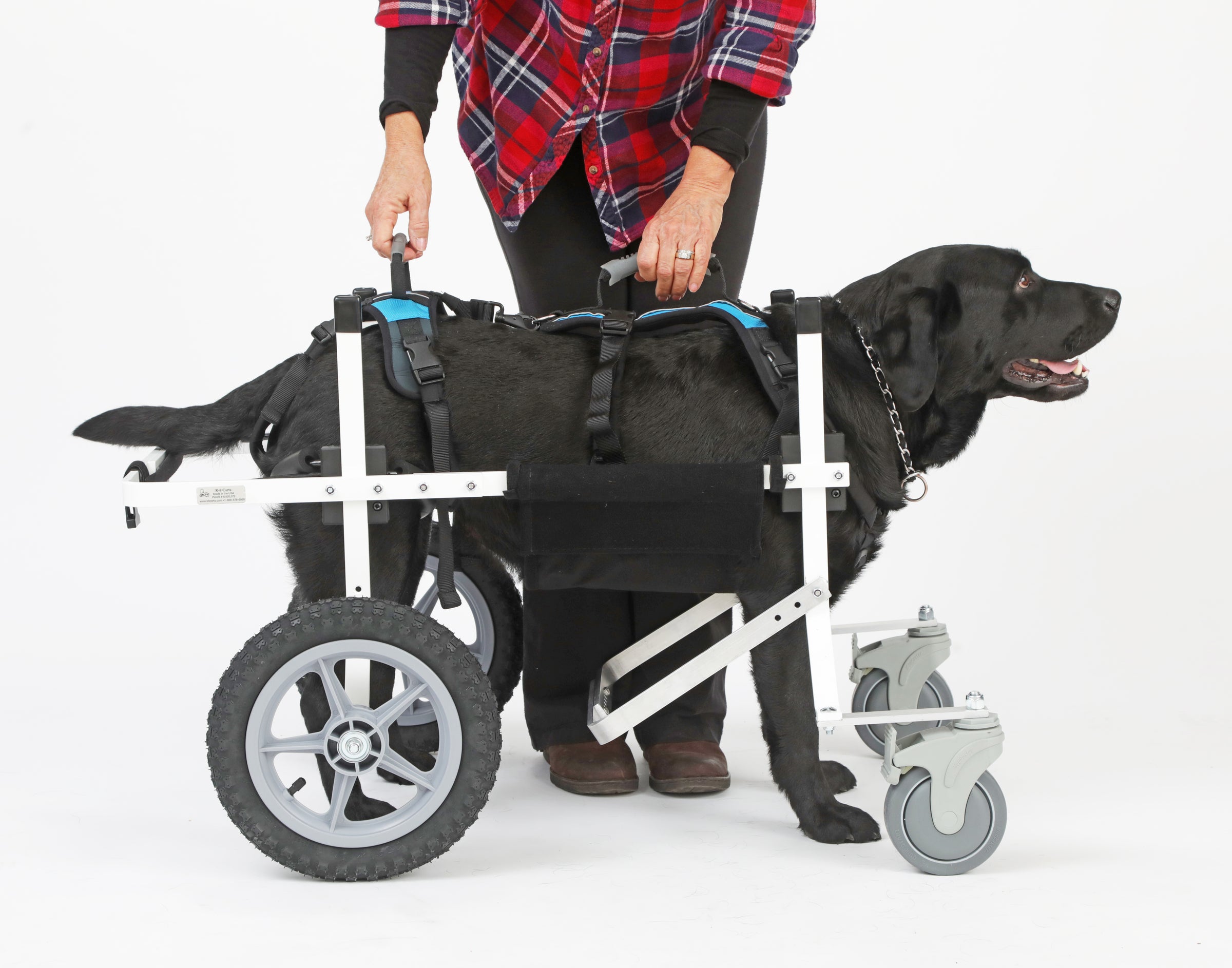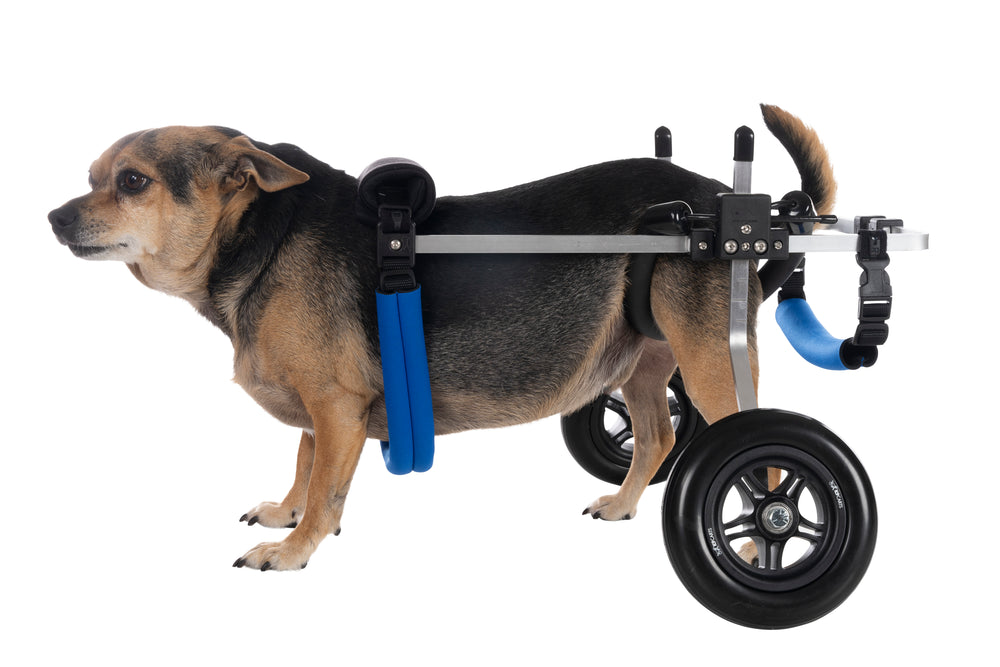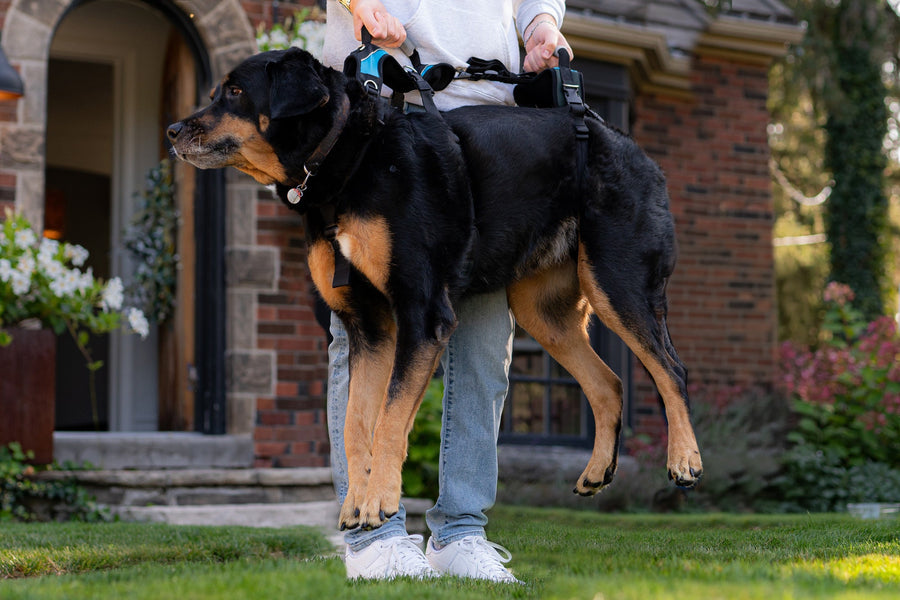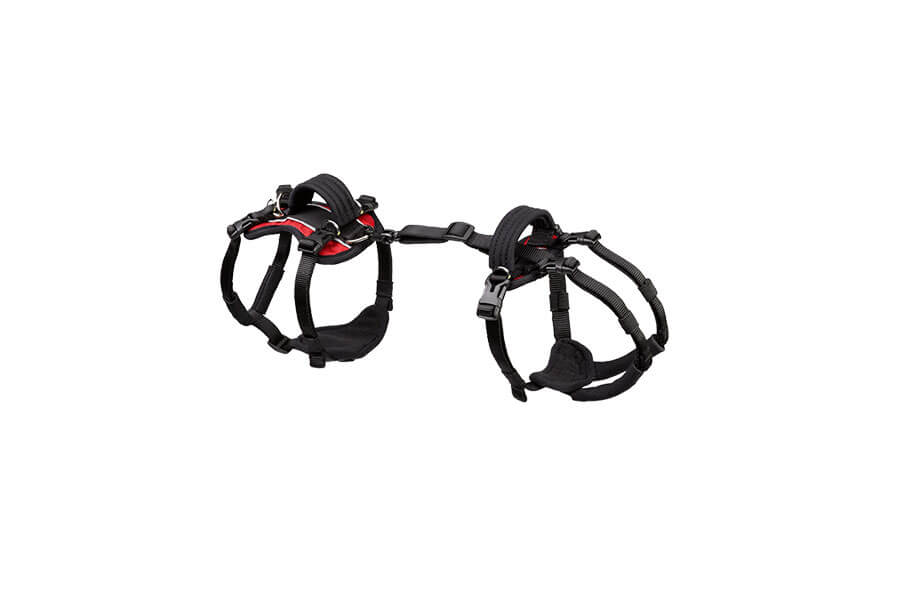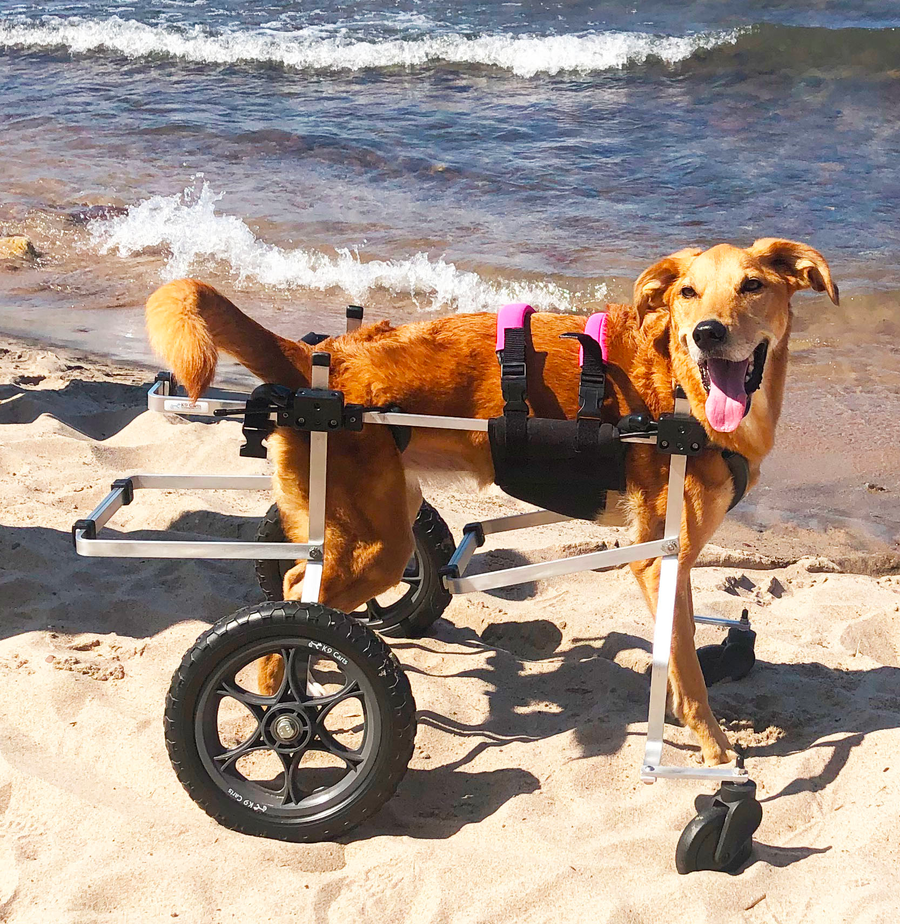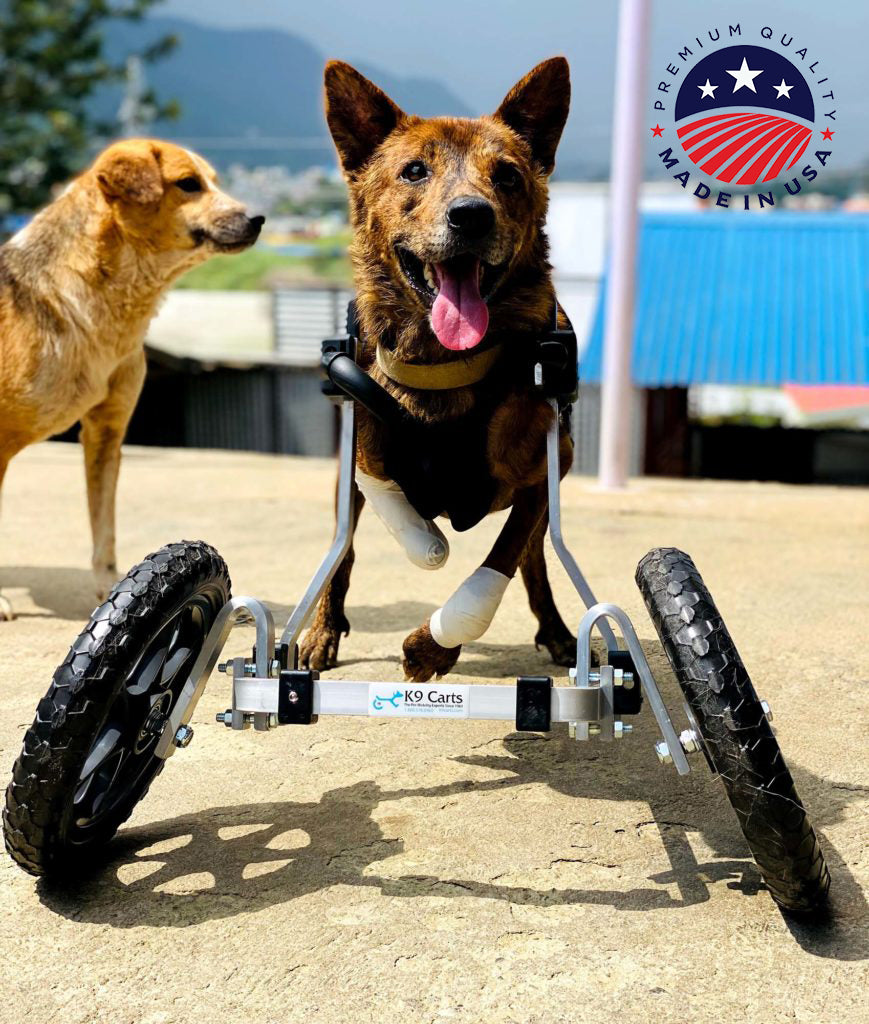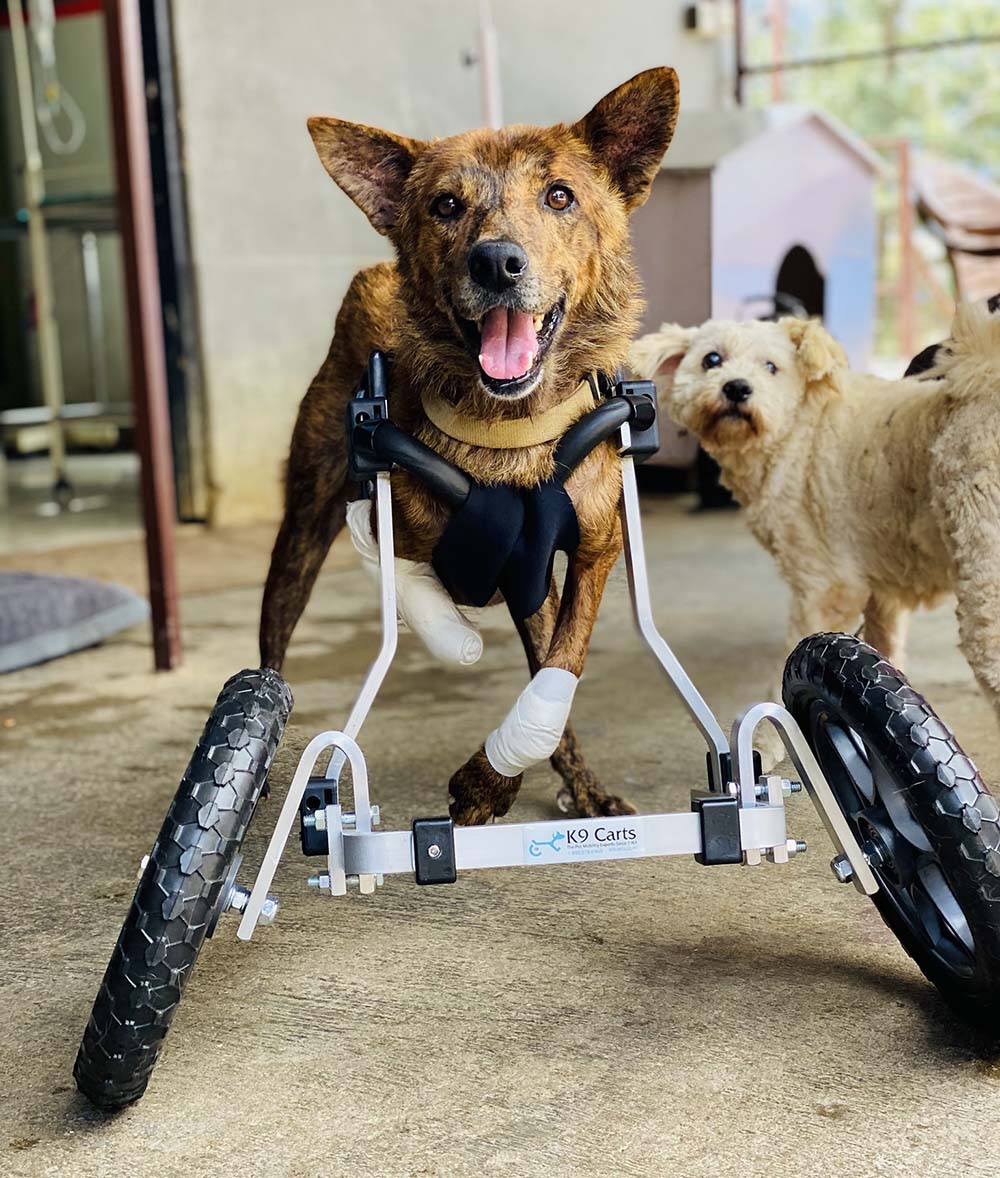Leukoencephalomyelopathy in Dogs (LEMP): Causes, Symptoms, Diagnosis, and Treatment
Leukoencephalomyelopathy, often abbreviated as LEMP, is a rare but serious inherited neurological disorder that affects the spinal cord and brain’s white matter in dogs. While not as common as other spinal diseases, it can cause significant mobility challenges, especially in affected breeds like Rottweilers and Leonbergers.
Understanding this condition fully can help dog owners recognize early symptoms, seek the right diagnosis, and explore supportive care options to improve quality of life.
Whether you’re a pet parent, veterinarian, or caregiver for a disabled dog, this page provides a detailed look at what LEMP is, what causes it, and how to manage its impact on your dog’s mobility and daily function.
What is leukoencephalomyelopathy (LEMP) in dogs?
LEMP is a progressive neurodegenerative disease that affects the white matter in a dog’s central nervous system, including both the brain (leukoencephalo-) and the spinal cord (myelopathy).
White matter consists of nerve fibers that help transmit messages between different parts of the nervous system. In dogs with LEMP, this white matter deteriorates over time, leading to problems with coordination, balance, and motor control.
The condition is inherited in an autosomal recessive manner, which means a dog must inherit two copies of the mutated gene (one from each parent) to develop the disease.
What causes LEMP in dogs?
LEMP is caused by a specific genetic mutation that disrupts normal development and maintenance of the white matter in the brain and spinal cord. Different breeds have different known mutations:
Leonbergers: A mutation in the NAPEPLD gene has been identified.
Rottweilers: A different form of the disease exists but the exact mutation may vary or remain under research.
Because of its genetic basis, the condition is passed down through breeding lines. Dogs that inherit only one copy of the gene typically do not show symptoms but can pass the gene to their offspring.
Breeding programs can screen for these mutations to reduce the risk of passing LEMP to future generations.
What are the early signs and symptoms of LEMP in dogs?
The symptoms of LEMP usually appear when a dog is between 1 and 4 years old. Since it is a slowly progressing condition, early signs may be subtle and worsen gradually.
Common symptoms include:
Wobbliness or uncoordinated movement (ataxia)
Muscle weakness, especially in the hind legs
Dragging of the rear feet
Knuckling or crossing of the legs while walking
Tremors, particularly during movement
Difficulty rising from a lying or sitting position
Stiff or abnormal gait
Lack of muscle control
As the disease progresses, dogs may become increasingly unstable or unable to walk without assistance. In later stages, some dogs may lose the ability to stand or walk at all.
How is LEMP diagnosed in dogs?
Diagnosing LEMP requires a combination of clinical evaluation, imaging, and genetic testing. Because its symptoms can resemble other neurological conditions like degenerative myelopathy (DM), intervertebral disc disease (IVDD), or spinal tumors, accurate diagnosis is essential.
Clinical examination
A veterinarian will start by assessing your dog’s reflexes, coordination, and gait. A thorough neurological exam will help determine whether the issue is localized to the spinal cord or brain.
Imaging studies
Advanced imaging like MRI (Magnetic Resonance Imaging) can show characteristic changes in the white matter of the spinal cord and brain. In dogs with LEMP, MRI may reveal symmetric lesions, especially in the cervical spinal cord and midbrain.
Genetic testing
Definitive diagnosis for LEMP involves testing for known gene mutations. For example:
Leonbergers: A genetic test is available to detect the NAPEPLD mutation.
Rottweilers: May require breed-specific or research-based genetic testing if available.
Genetic testing can confirm whether your dog is affected, a carrier, or clear of the mutation.
Can LEMP be treated or cured?
There is currently no cure for LEMP. Because it is caused by an inherited genetic mutation that affects the central nervous system, treatment focuses on managing symptoms, maintaining mobility, and improving the dog’s quality of life.
What are the management and supportive care options for LEMP?
Supportive care plays a key role in helping dogs with LEMP live more comfortably. While the condition will likely progress, many dogs can remain active with the right interventions.
Physical therapy
Canine rehabilitation can help strengthen muscles and improve coordination. Modalities such as hydrotherapy, assisted walking, and range-of-motion exercises are often recommended by veterinary physiotherapists.
Nutritional support
While there is no specific diet for LEMP, ensuring your dog receives a well-balanced diet that supports joint and nerve health may help with overall strength. Omega-3 fatty acids, antioxidants, and supplements like B-complex vitamins may be useful, though owners should consult a veterinarian before introducing any new supplements.
Mobility support with dog wheelchairs
As LEMP progresses, many dogs begin to struggle with walking. Custom-built dog wheelchairs, such as those offered by K9 Carts, are an effective tool to restore mobility.
Unlike off-the-shelf mobility aids, K9 Carts wheelchairs are designed based on your dog’s unique measurements and mobility needs. This ensures proper weight distribution and comfort, especially for dogs with hind limb weakness, which is common in LEMP.
Wheelchairs can help:
Prevent further injury from dragging limbs
Maintain muscle tone and circulation through assisted movement
Promote mental health by allowing continued interaction and outdoor activity
The right mobility support can make a significant difference in both the physical and emotional well-being of a dog with LEMP.
Environmental adaptations
Simple changes at home can also help reduce strain on your dog:
Use non-slip rugs or flooring to prevent falls
Install ramps to avoid stairs
Provide orthopedic bedding for better joint support
Avoid slick surfaces like tile or hardwood floors
How long can a dog live with LEMP?
The life expectancy of a dog with LEMP varies depending on how early the condition is detected and how well it is managed. Some dogs maintain a good quality of life for years with proper care and mobility support. Others may progress more quickly and require advanced support within a shorter timeframe.
Regular check-ins with your veterinarian and rehabilitation specialists will help monitor your dog’s condition and adjust the care plan as needed.
Is LEMP preventable in dogs?
Because LEMP is a genetic disease, it is preventable only through responsible breeding. Testing potential breeding dogs for known LEMP-related mutations is critical in reducing the spread of the condition.
If you’re planning to adopt or purchase a dog from an affected breed, ask for genetic test results from the breeder. Reputable breeders will provide proof that both parents are tested and cleared for LEMP.
Living with LEMP: Supporting your dog’s daily life
A diagnosis of LEMP can feel overwhelming, but with the right care, many dogs continue to enjoy an active and fulfilling life. Supportive treatments, physical therapy, and tools like custom dog wheelchairs can help them remain engaged, mobile, and happy.
If your dog has trouble walking or staying upright, it is worth discussing mobility aid options with your veterinary team. A well-designed support system can restore not only movement but also confidence and comfort for your pet.
K9 Carts has worked with thousands of pets dealing with mobility-limiting conditions like LEMP. Our veterinary-designed wheelchairs are customized for each dog’s body type and level of function, helping them regain independence while relieving the stress on their joints and spine.
Frequently Asked Questions
What is the difference between LEMP and degenerative myelopathy in dogs?
Leukoencephalomyelopathy (LEMP) and degenerative myelopathy (DM) are both progressive neurological diseases in dogs, but they have different causes and affect different areas of the nervous system.
LEMP is caused by a genetic mutation that disrupts white matter in both the brain and spinal cord. It typically affects young dogs and is breed-specific, such as in Leonbergers and Rottweilers. DM, on the other hand, usually affects older dogs and is more commonly seen in breeds like German Shepherds and Boxers. DM primarily targets the spinal cord, not the brain, and does not involve the same types of white matter degeneration seen in LEMP.
A key diagnostic difference is that LEMP can be confirmed through breed-specific genetic testing and brain or spinal cord imaging, while DM is often diagnosed by ruling out other conditions and through the SOD1 gene test.
How can I tell if my dog has LEMP or just a mobility issue from aging?
If your dog is showing signs like wobbliness, rear limb weakness, or trouble walking, it could be related to aging or a neurological condition such as LEMP.
LEMP typically affects young adult dogs, between 1 and 4 years old, especially in breeds like Leonbergers and Rottweilers. These dogs may show coordination problems, dragging of limbs, or difficulty standing that worsens over time. In contrast, senior dogs might experience joint stiffness, arthritis, or general weakness due to aging.
If you notice symptoms in a younger dog or the progression seems fast, consult your veterinarian. Advanced diagnostics like MRI and genetic testing can help determine the exact cause and whether LEMP may be involved.
Can a dog with LEMP still live a good quality of life?
Yes, many dogs with LEMP can live a good quality of life with the right care and support.
While LEMP is a progressive disease and there is no cure, managing the symptoms early can slow functional decline. Custom dog wheelchairs, physical therapy, a stable environment, and nutritional support all contribute to improving a dog’s comfort and mobility. Regular veterinary care also helps track disease progression and adjust the care plan as needed.
Dogs with mobility issues still benefit greatly from mental stimulation and social interaction. Owners who actively support their dog’s movement and comfort often report that their pets remain happy and engaged even with limited mobility.
Is there a genetic test for LEMP in all dog breeds?
No, genetic tests for LEMP are currently only available for specific breeds where the mutation has been identified.
The most well-established test is for the NAPEPLD gene mutation in Leonbergers, which can identify whether a dog is affected, a carrier, or clear. Some testing is also available for Rottweilers, although research is ongoing to better define the genetic basis in this breed.
If your dog is not part of a known affected breed, there may not be a specific genetic test available. In those cases, diagnosis relies on clinical symptoms, MRI findings, and exclusion of other conditions. If you're considering breeding a dog from an at-risk breed, genetic screening should be part of your health testing protocol.
What are the treatment options for dogs with LEMP?
There is no cure for LEMP, but treatment focuses on supportive care to manage symptoms and preserve mobility.
Treatment options include:
Physical therapy to maintain muscle tone and joint flexibility
Mobility aids like custom dog wheelchairs to help with walking
Nutritional supplements that support nerve health, such as omega-3 fatty acids or B vitamins
Environmental modifications like ramps and non-slip flooring
Routine veterinary checkups to monitor progression and adjust the care plan
These approaches can significantly improve a dog’s quality of life and extend their ability to move independently. Early intervention is key to better outcomes.
How fast does LEMP progress in affected dogs?
The rate of progression in LEMP can vary, but it is generally slow and gradual over months or years.
Most dogs begin showing signs between 1 and 4 years of age. Early symptoms might include minor coordination issues or hind limb weakness. Over time, these signs worsen, leading to more pronounced wobbliness, dragging limbs, and in some cases, an inability to walk without assistance.
With early diagnosis and supportive care, including physical therapy and use of mobility aids, many dogs can maintain a reasonable level of function and comfort for an extended period. However, progression is expected, and dogs with LEMP require increasing levels of support as time goes on.
What breeds are most at risk for developing LEMP?
LEMP is most commonly found in Leonbergers and Rottweilers, though it has also been documented in a few other large breeds.
Leonbergers are known to carry a specific NAPEPLD gene mutation that causes the disease.
Rottweilers may develop a different form of LEMP, and some studies suggest a genetic basis, although it's less well understood.
Responsible breeders of these breeds often include genetic testing for LEMP in their breeding programs. If you own or are considering adopting a dog from a breed at risk, ask the breeder for genetic screening results and health history of the parents.
Are there mobility aids that help dogs with LEMP?
Yes, mobility aids can play a critical role in managing LEMP, especially as the disease progresses.
Custom dog wheelchairs, such as those from K9 Carts, are often recommended for dogs with hind limb weakness. These wheelchairs support the dog’s rear end, allowing them to walk, play, and remain active even if they cannot support their own weight fully.
Other helpful tools include:
Support slings for short-term assistance
Booties to prevent paw injury from dragging
Ramps and non-slip flooring to reduce the risk of falls
Mobility aids improve quality of life, maintain independence, and prevent injuries caused by instability or dragging limbs.
How is LEMP confirmed in dogs if there are no outward symptoms yet?
In dogs that are at genetic risk but not yet showing symptoms, genetic testing is the only reliable way to confirm whether they carry the disease.
In breeds like Leonbergers, a DNA test for the NAPEPLD gene can identify whether a dog is:
Clear (no copies of the mutation)
Carrier (one copy, no symptoms but can pass it on)
Affected (two copies, will likely develop symptoms)
This information is especially useful for breeders and owners of young dogs in affected breeds. Early identification can also help owners plan for supportive care as the dog ages, even if symptoms have not appeared yet.
Should dogs with LEMP be euthanized when they can no longer walk?
Loss of walking ability does not necessarily mean a dog’s life is over. Euthanasia should be considered only when quality of life has declined significantly, and other support options no longer help.
Many dogs with LEMP who can no longer walk continue to live fulfilling lives using mobility aids like custom wheelchairs. These tools, along with attentive care, physical therapy, and emotional support, can allow dogs to eat, play, interact, and enjoy daily routines.
However, if a dog is in constant pain, cannot control bodily functions, or shows signs of extreme discomfort or stress, your veterinarian can help assess whether euthanasia is the kindest option. Each case is different and should be guided by veterinary advice and the dog’s overall well-being.
References
https://pubmed.ncbi.nlm.nih.gov/29643404/
https://pubmed.ncbi.nlm.nih.gov/23690496/
https://pubmed.ncbi.nlm.nih.gov/20732599/
https://pubmed.ncbi.nlm.nih.gov/25432679/
https://pmc.ncbi.nlm.nih.gov/articles/PMC3614464/
https://pmc.ncbi.nlm.nih.gov/articles/PMC4579386/
https://pmc.ncbi.nlm.nih.gov/articles/PMC2634802/
https://www.nature.com/articles/s41598-018-23938-7
https://onlinelibrary.wiley.com/doi/10.1111/j.1939-1676.2008.0068.x
https://canine-genetics.umn.edu/canine-genetic-testing/leukoencephalomyelopathy
https://ivdd.org.au/disa01/wp-content/uploads/2016/11/Rehab-Therapy-Evidence.pdf




 He is completely comfortable in his cart now – and the transformation in his personality because he feels more like a “dog” is amazing.
He is completely comfortable in his cart now – and the transformation in his personality because he feels more like a “dog” is amazing. Wish to greatly thank you for building Truman’s wheelchair to custom fit him
Wish to greatly thank you for building Truman’s wheelchair to custom fit him About thirteen years ago, she was born with crippled back legs. I found her on a busy highway when she was about 3 months old.
About thirteen years ago, she was born with crippled back legs. I found her on a busy highway when she was about 3 months old. I rented a rear support wheelchair for my miniature dachshund about two weeks ago and I wanted to inform you that I wanted to rent for another two weeks.
I rented a rear support wheelchair for my miniature dachshund about two weeks ago and I wanted to inform you that I wanted to rent for another two weeks. He is completely comfortable in his cart now – and the transformation in his personality because he feels more like a “dog” is amazing.
He is completely comfortable in his cart now – and the transformation in his personality because he feels more like a “dog” is amazing. Wish to greatly thank you for building Truman’s wheelchair to custom fit him
Wish to greatly thank you for building Truman’s wheelchair to custom fit him About thirteen years ago, she was born with crippled back legs. I found her on a busy highway when she was about 3 months old.
About thirteen years ago, she was born with crippled back legs. I found her on a busy highway when she was about 3 months old. I rented a rear support wheelchair for my miniature dachshund about two weeks ago and I wanted to inform you that I wanted to rent for another two weeks.
I rented a rear support wheelchair for my miniature dachshund about two weeks ago and I wanted to inform you that I wanted to rent for another two weeks.